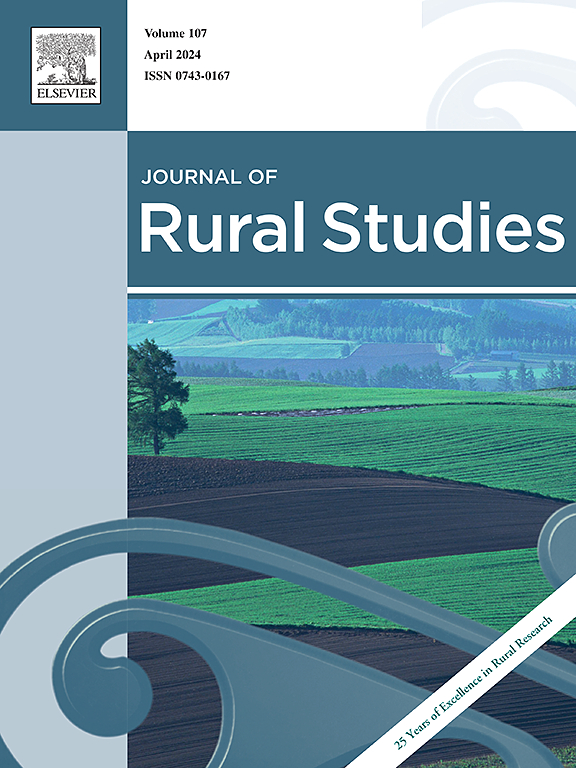Exploring the urban-rural dichotomies in post-pandemic migration intention: Empirical evidence from Europe
IF 5.1
1区 社会学
Q1 GEOGRAPHY
引用次数: 0
Abstract
Since the beginning of the 21st century, we have been living in the ‘urban century’, characterised by a rise in the number of cities and mega-cities and a structural population increase in most cities, to the detriment of rural areas. Given the declining interest in rurality, the aims and scope of this paper are to map out the complex force field of rurality versus urbanity, and explore if the COVID pandemic has become a ‘game changer’ that thus may swift the existing patterns. Relying on multilevel modelling, to also account for between-country differences, and using Eurobarometer data on post-pandemic migration intention in both rural and urban areas, our results do not find support for a major post-covid urban exodus. Younger individuals from large cities are indeed more willing to leave for rural areas when they are convinced that they can play an active role in the local decision-making process. Teleworking, as well as EU concrete actions for addressing environmental issues, may also drive more migration toward rural areas. On the other hand, poor access to health services may push individuals towards urban areas. In policy terms, our findings advocate for improving access to public services in rural areas. In addition, the study reinforces the role of the Cohesion Policy to urge the twin transition, as facilitating teleworking and strengthening the environmental commitment were shown to make rural areas more appealing.
探索大流行后移民意向中的城乡二分法:欧洲的经验证据
自 21 世纪初以来,我们一直生活在 "城市世纪",其特点是城市和特大城市数量增加,大多数城市的人口结构性增长,这不利于农村地区的发展。鉴于人们对农村的兴趣日益减少,本文的目的和范围是描绘农村与城市的复杂力场,并探讨 COVID 大流行是否已成为 "游戏规则的改变者",从而可能改变现有的模式。通过多层次建模,同时考虑到国家间的差异,并利用欧洲晴雨表关于大流行后农村和城市地区移民意向的数据,我们的研究结果并不支持大流行后城市人口大量外流的说法。来自大城市的年轻人在确信自己能在当地决策过程中发挥积极作用时,确实更愿意前往农村地区。远程办公以及欧盟为解决环境问题而采取的具体行动,也可能促使更多的人向农村地区迁移。另一方面,难以获得医疗服务也可能促使人们向城市地区迁移。在政策方面,我们的研究结果主张改善农村地区的公共服务。此外,这项研究还加强了 "凝聚力政策 "在促进孪生过渡方面的作用,因为促进远程办公和加强环保承诺表明,农村地区更具吸引力。
本文章由计算机程序翻译,如有差异,请以英文原文为准。
求助全文
约1分钟内获得全文
求助全文
来源期刊

Journal of Rural Studies
Multiple-
CiteScore
9.80
自引率
9.80%
发文量
286
期刊介绍:
The Journal of Rural Studies publishes research articles relating to such rural issues as society, demography, housing, employment, transport, services, land-use, recreation, agriculture and conservation. The focus is on those areas encompassing extensive land-use, with small-scale and diffuse settlement patterns and communities linked into the surrounding landscape and milieux. Particular emphasis will be given to aspects of planning policy and management. The journal is international and interdisciplinary in scope and content.
 求助内容:
求助内容: 应助结果提醒方式:
应助结果提醒方式:


